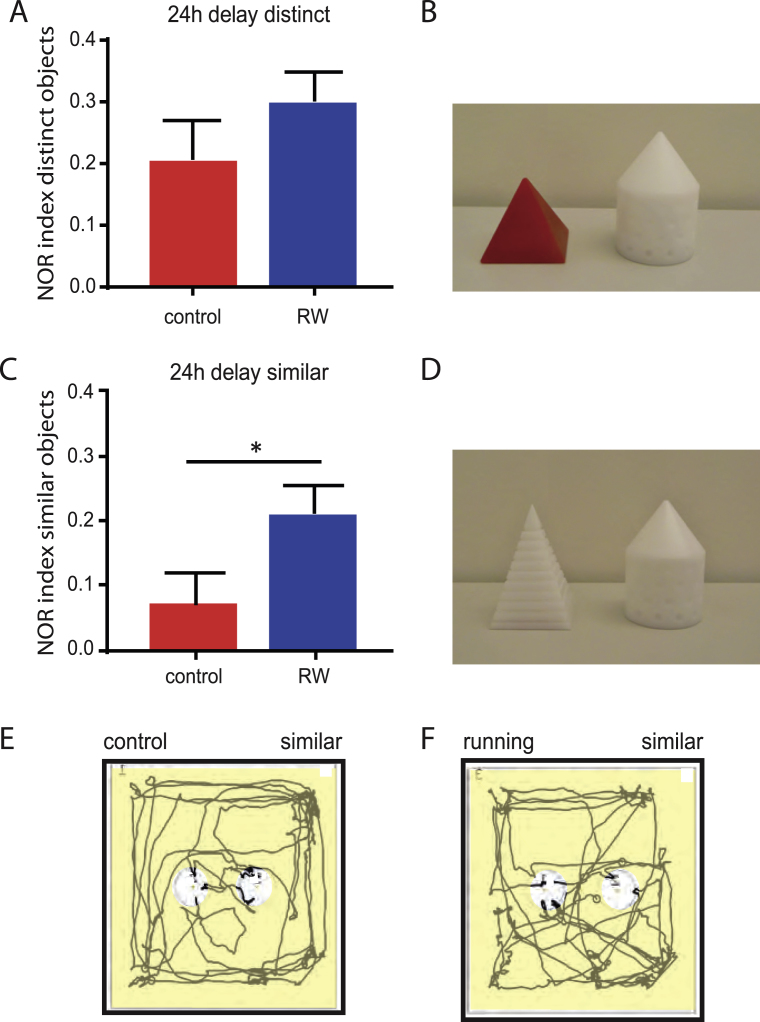Fig.4.
Running improves pattern separation and recognition memory at 24 h delay. A, B, After 24 h delay, one sample object (cone) was replaced by a distinct object (red pyramid) shown in (B). Animals spent significantly more time in exploring the novel object relative to the familiar object in both, control (n = 9) and running mice (n = 9). C, D, In a different cohort of animals one sample object (cone) was replaced by a similar object (white pyramid) shown in (D). At 24 h delay, running animals spent significantly more time in exploring the novel object (n = 11) relative to control animals (n = 16). Control animals did not show a significant recognition memory for the familiar object at 24 h delay. E, F, Example tracks showing a 2 min path of a control animal (E) and a running animal (F), during the 24 h delay novel object recognition test. The novel object in E and F was placed on the left.

